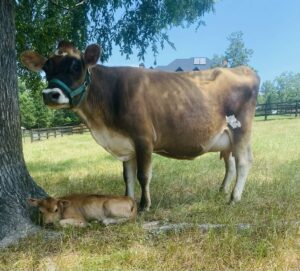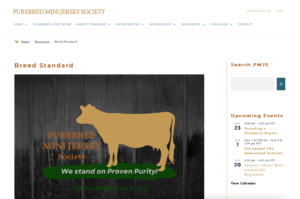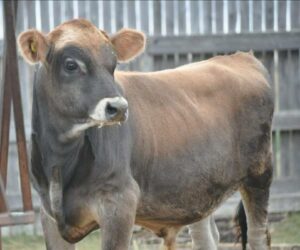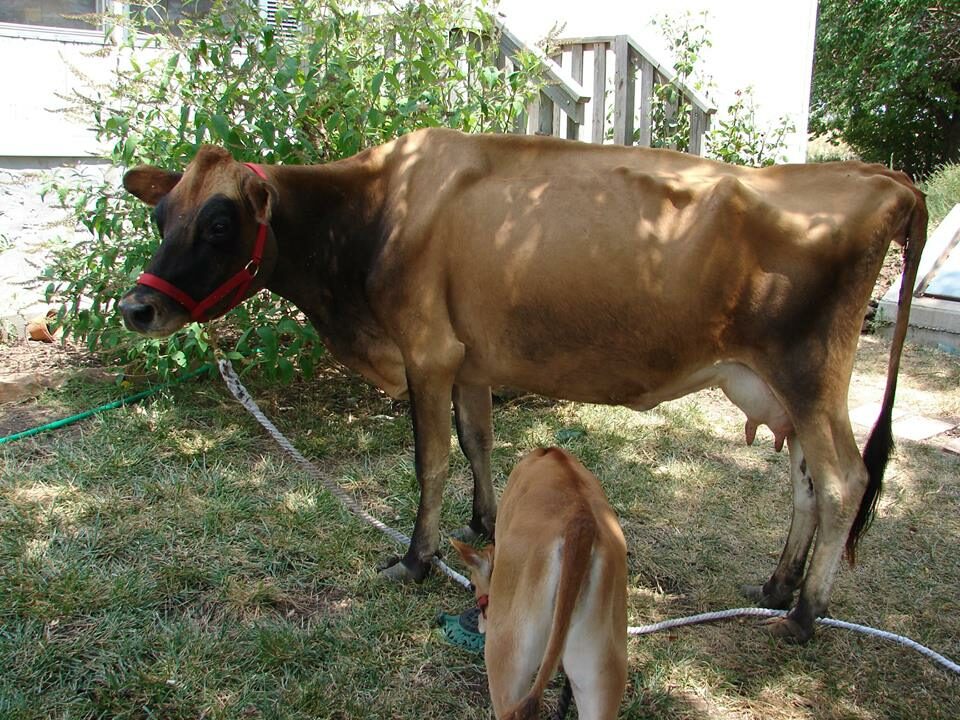
Evaluating Body Condition of a Dairy Cow
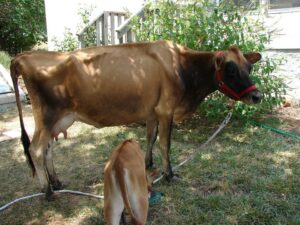
Homestead cattle have always been popular but they’re an even hotter commodity in recent years. As I drive into town, I frequently see dairy cows on pasture. Many of them are so skinny it wouldn’t be worth the effort to process them and they’d be worth almost nothing at auction.
For many new homesteading families, this is their first large livestock and first cow. Most folks have no idea what a healthy milk cow is supposed to look like. They might have bought her in poor condition and been told by the seller that’s normal for her. All too often, I see dairy breeds of cattle that would result in a 1-2 in Body Condition Score (BCS). Sadly, they literally look like walking skeletons. If they were horses, passersby would call the authorities but for dairy cows, the response is, “It’s normal”.
It’s a common misconception that dairy cows should look emaciated.
So, how do you know the difference between a dairy cow with a good BCS and a poor one? According to the article, “Body Condition Scoring of Dairy Cattle”, by J French, et. al, published online by the government of Ontario, Canada (2020), “Ideal condition scores are 3.0–3.25 at dry off and calving, and 2.25–2.75 at peak lactation, with no cows changing condition score class by more than 0.5–0.75 over any lactation period.”
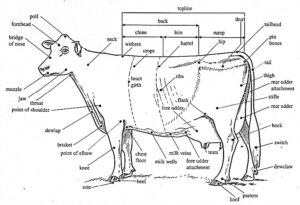
According to an online presentation by Penn State Extension, “Learn To Score Body Conditioning (BCS) For Dairy Cows“, (2017), you want to start by analyzing if your cow is under or over a BCS of 3. You will be specifically evaluating the thurl angle between the hook and pin bones found at the thigh. The pin bones are located on both sides of the tailhead. The hook is the forward bone of the hip.
The thurl is the vertex of the angle of the bones. Specifically, a “V” angle is a BCS below 3 and a “U” angle is a BCS over 3.
Here are two examples:
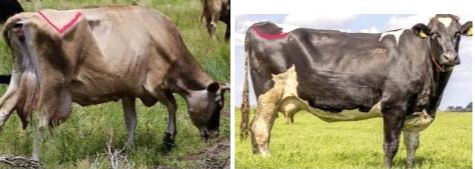
The full-size Jersey on the left is below a BCS of 3 and the Holstein on the right is over a BCS of 3. Even though we’re looking at that angle between the hook and pin, notice the shoulder blades. You could practically outline the bone of the shoulder blade on the Jersey cow. How many ribs can you count on the Jersey compared to the Holstein?
Why BCS Matters
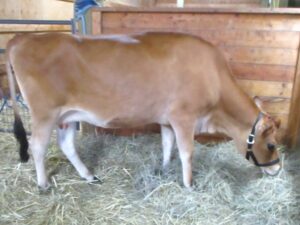
- Maximum milk production
- Long-term health impacts
- Lower risk of succumbing to disease
- Higher reproductive success
- Longer production life
- Health during gestation results in healthier calves
A LOW BCS FOR AN EXTENDED AMOUNT OF TIME CAN
HAVE A NEGATIVE IMPACT ON FERTILITY AND LONGEVITY.
Practice Makes Perfect
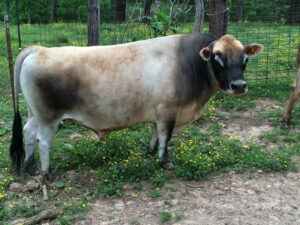
To better understand scoring your dairy cattle review this slideshow by Penn State University on understanding BCS
Thank you for your interest in learning more about caring for your Purebred Mini Jerseys!
Terri Kluppel
